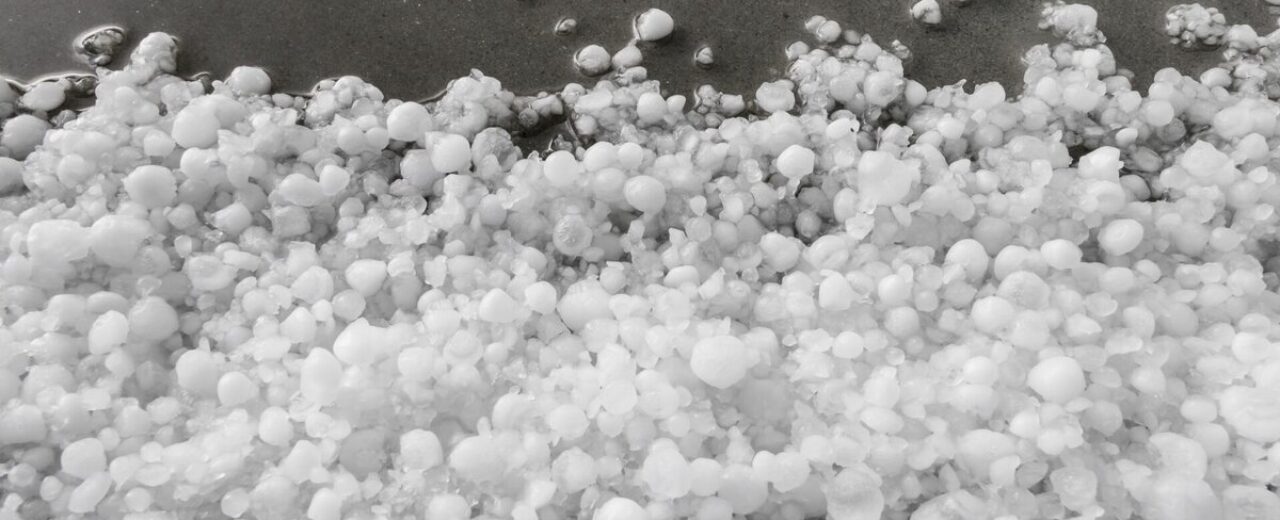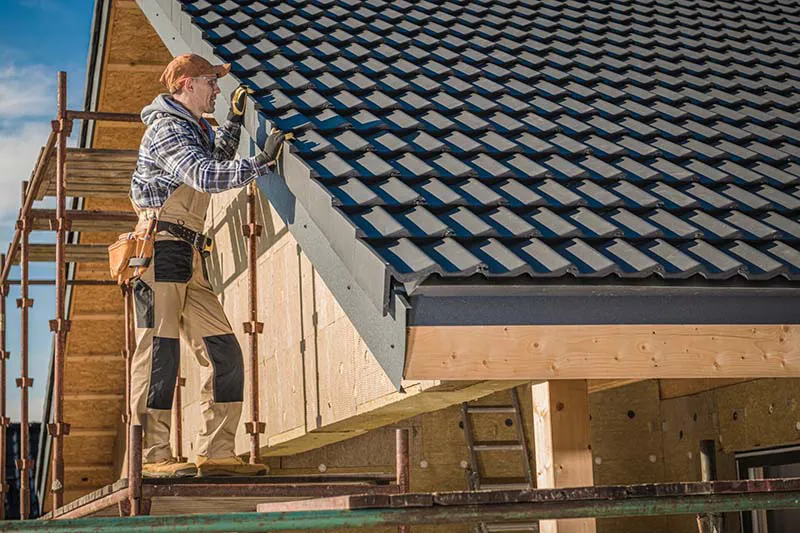Hail damage is common in the Intermountain area and can devastate your roof. If a hail storm has hit your home, it’s vital that you take prompt action to repair any damage to prevent bigger maintenance issues from arising.
A visual inspection will give you an indication of how much damage your roof has sustained, and if you are concerned, call in a professional company to have a look.
Signs of Hail Damage
Hail damage can cause leaks and curled shingles and encourages algae and moss growth. The damage may seem minimal, but even a small hole in your roof can lead to major problems. Any break in your roofing system is an area for possible water infiltration. Not only can this cause issues like algae and mold, but it can also lead to water damage in your roof decking. If the damage is severe, you may notice water stains inside your home, particularly in the attic. It could also be discolored walls or mold growth.
Damage from hail can be functional or cosmetic. Functional damage affects the integrity of your roof system and will impact its longevity. Cosmetic damage looks bad but may not be severe enough to require a full roof replacement. Damage from hailstones can sometimes be difficult to see because it depends on the size and speed of the hail, the roof material, and the age of your roof.
Here are some common signs your roof is damaged by hail:
- Black-colored dots on your roof
- Granule loss
- Cracked shingles
Hailstones can be the size of a pea or a softball, and the damage they can do depends on their size and the speed at which they hit your roof. If you can’t see the top of your roof, look at your gutters and downspouts. If they have sustained damage, it is a good indication that your roof also has.
Hail Damage: What’s Next?
After a hail storm, it’s critical that you inspect your residential roof for damage. You can visually inspect it, but be sure to take photos and videos for your insurance claim. You must contact your insurance company, who will guide you through the claims process.
You can also hire a professional roofing contractor to assess the damage and include that assessment in your claim. Most insurance policies cover hail damage, but submitting a prompt claim is vital.
If you notice minor damage, you can get a quote from a roofing contractor to begin repairs. However, if the damage is severe, you may need a full roof replacement. In the meantime, you can cover the damaged area with a tarp to avoid further water damage.
Repairing your roof as soon as possible is key. Repairs left for too long can compromise your roof and create structural issues, which will take time and money to rectify.
Call The Roofing Center for an Inspection
At The Roofing Center, we regularly inspect after storms, particularly as the Intermountain area is known for harsh weather.
When we inspect a roof, we look at the chimney, vents, skylights, and shingles for signs of damage. All of these areas are susceptible to hail and water infiltration. Remember, your roof is a system that needs to work together to keep your home safe, and if one area is compromised, it can affect the entire system.
For roofs with asphalt shingles, we look for:
- missing granules
- dark dents
- an exposed roof matt
For concrete, clay, or metal roof sheets, we look for:
- cracks
- loose granules
- bruises
Some roofs, particularly stone-coated steel roofs, can be damaged further if walked on incorrectly. That is why we recommend calling a professional company to assess damage after a hailstorm.
Don’t Leave a Damaged Roof Unattended
The best thing you can do after a storm is to inspect your roof yourself or use a professional company to begin repairs as soon as possible. The whole point of a roofing system is to waterproof your home, and any damage to that system needs to be repaired immediately.
If you think your roof has sustained hail damage, contact us for an inspection and a quote on repair work.







